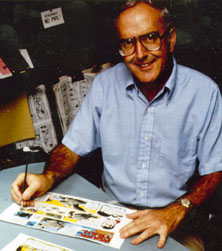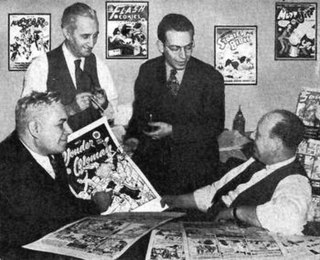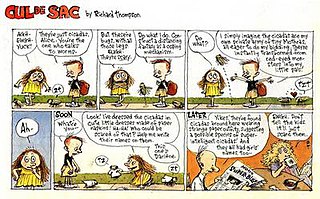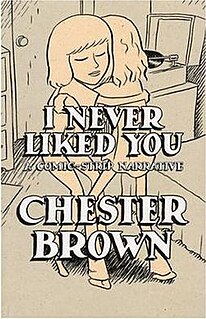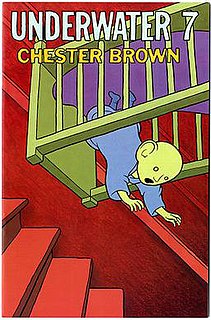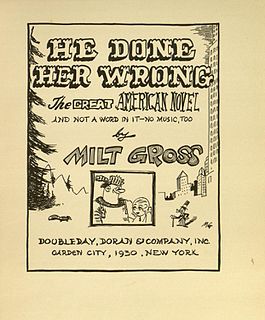
Modern Cartoonist is a 1997 essay by Daniel Clowes published as a 16-page black, white and red illustrated pamphlet. It was originally bound in with copies of Eightball #18 and was also offered for sale individually. Although the back cover describes it as being published by "The Catholic Federation for Preservation and Advancement of All Things Related to the Comic Book and its Creators, Inc.," the address given for ordering additional copies is that of Fantagraphics Books, presumably its actual publisher. Because of its subject matter, its small dimensions and its illustrations, and its original distribution inside of a comic book, Modern Cartoonist is sometimes classed as a minicomic.

An essay is, generally, a piece of writing that gives the author's own argument — but the definition is vague, overlapping with those of a paper, an article, a pamphlet, and a short story. Essays have traditionally been sub-classified as formal and informal. Formal essays are characterized by "serious purpose, dignity, logical organization, length," whereas the informal essay is characterized by "the personal element, humor, graceful style, rambling structure, unconventionality or novelty of theme," etc.
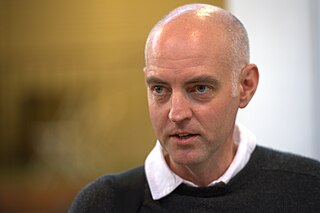
Daniel Gillespie Clowes is an American cartoonist, graphic novelist, illustrator, and screenwriter. Most of Clowes's work first appeared in Eightball, a solo anthology comic book series. An Eightball issue typically contained several short pieces and a chapter of a longer narrative that was later collected and published as a graphic novel, such as Like a Velvet Glove Cast in Iron (1993), Ghost World (1997), and David Boring (2000). Clowes's illustrations have appeared in The New Yorker, Newsweek, Vogue, The Village Voice, and elsewhere. With filmmaker Terry Zwigoff, Clowes adapted Ghost World into a 2001 film and another Eightball story into the 2006 film, Art School Confidential. Clowes's comics, graphic novels, and films have received numerous awards, including a Pen Award for Outstanding Work in Graphic Literature, over a dozen Harvey and Eisner Awards, and an Academy Award nomination.

A pamphlet is an unbound book. It may consist of a single sheet of paper that is printed on both sides and folded in half, in thirds, or in fourths, called a leaflet, or it may consist of a few pages that are folded in half and saddle stapled at the crease to make a simple book.
Contents
The essay is a series of portentous reflections on the comics medium and its present and future challenges. It is divided into four parts: "The Current Situation", "So, Why Comics?", "To the Young Cartoonist" and "The Future and Beyond".

Comics is a medium used to express ideas through images, often combined with text or other visual information. Frequently, comics takes the form of juxtaposed sequences of panels of images. Often textual devices such as speech balloons, captions, and onomatopoeia indicate dialogue, narration, sound effects, or other information. The size and arrangement of panels contribute to narrative pacing. Cartooning and similar forms of illustration are the most common image-making means in comics; fumetti is a form which uses photographic images. Common forms include comic strips, editorial and gag cartoons, and comic books. Since the late 20th century, bound volumes such as graphic novels, comic albums, and tankōbon have become increasingly common, while online webcomics have proliferated in the 21st century with the advent of the internet.
In a 2001 interview Clowes, while denying that the essay was a joke, said that his intention in Modern Cartoonist was "to write something that had this certain tone that I find amusing, something that's on the razor's edge between this sort of pompous, heartfelt earnestness and its ironic counterpoint." [1]

A joke is a display of humour in which words are used within a specific and well-defined narrative structure to make people laugh and is not meant to be taken seriously. It takes the form of a story, usually with dialogue, and ends in a punch line. It is in the punch line that the audience becomes aware that the story contains a second, conflicting meaning. This can be done using a pun or other word play such as irony, a logical incompatibility, nonsense, or other means. Linguist Robert Hetzron offers the definition:
A joke is a short humorous piece of oral literature in which the funniness culminates in the final sentence, called the punchline… In fact, the main condition is that the tension should reach its highest level at the very end. No continuation relieving the tension should be added. As for its being "oral," it is true that jokes may appear printed, but when further transferred, there is no obligation to reproduce the text verbatim, as in the case of poetry.
